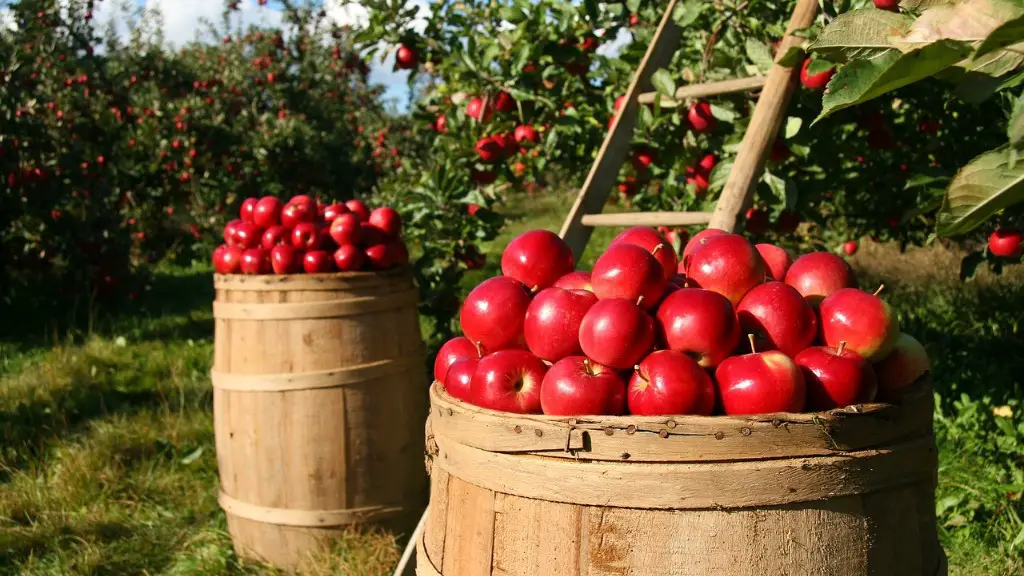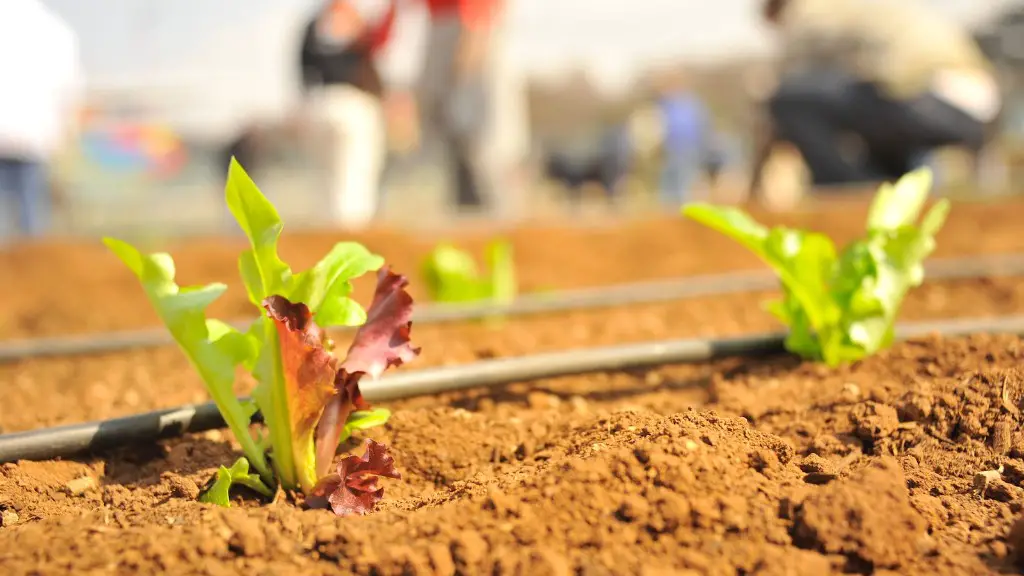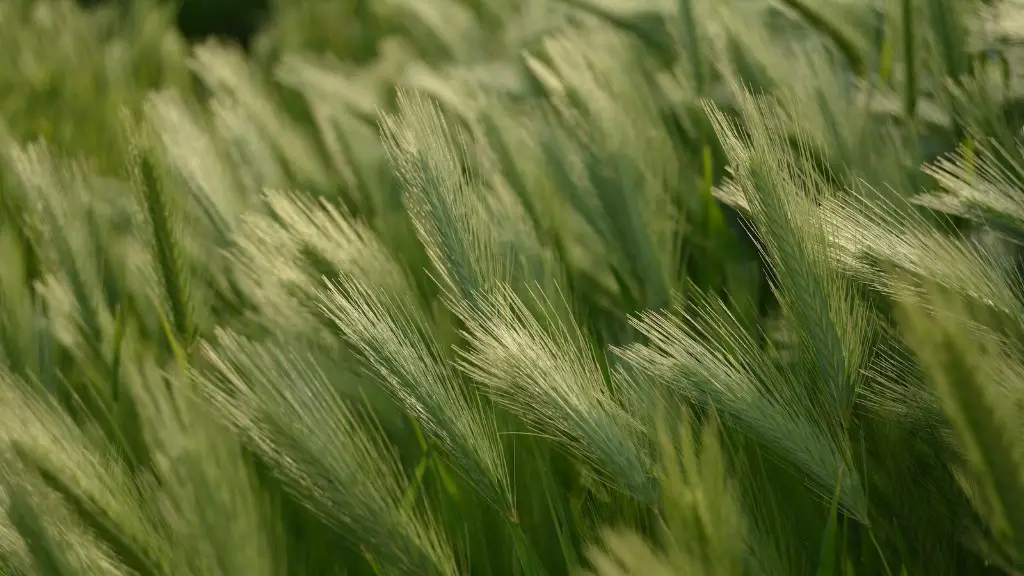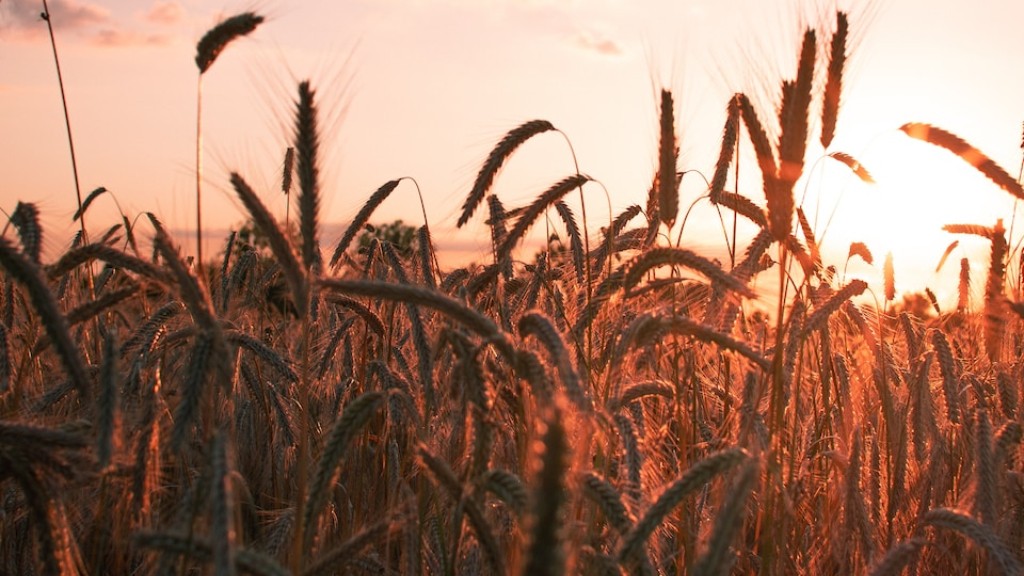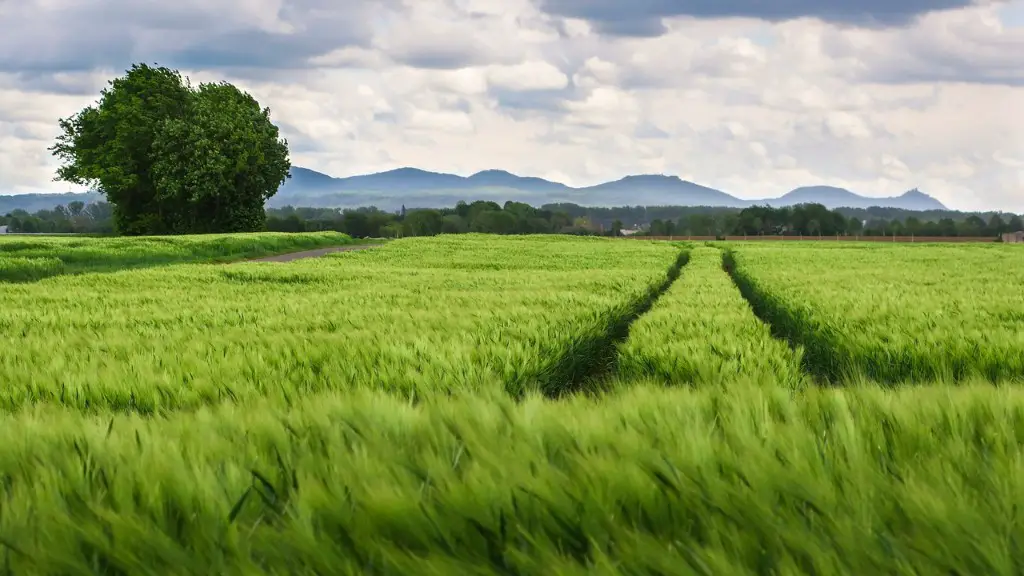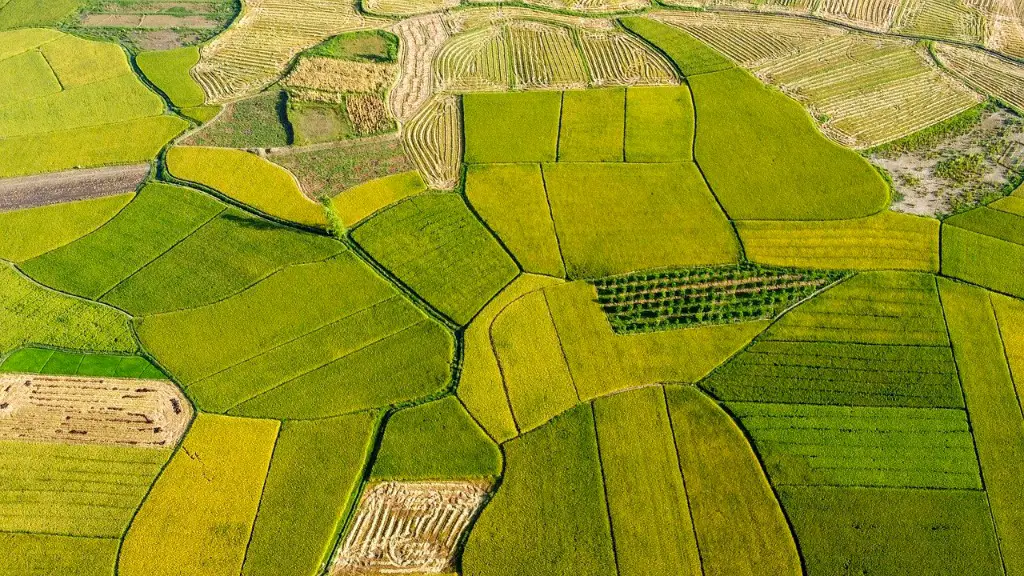Agriculture is the practice of raising plants and animals for food, fiber and other products in order to sustain life. It is critical for human survival, but unfortunately it has come with a number of issues and problems. These include land degradation, soil erosion, water pollution and poor management practices, just to name a few.
Land degradation is caused by the over-exploitation of land for various agricultural activities. Excessive use of pesticides and chemical fertilizers can degrade the quality of soil, leading to health problems for the plants and animals living on the land. Poor agricultural practices such as overgrazing can also lead to soil degradation.
Soil erosion refers to the loss of soil due to wind or water, resulting in less fertile land. This can be caused by over-tilling, which disturbs the top layer of the soil, or by deforestation, which exposes the soil to rain and wind. Poor land management practices can also increase erosion, leading to significant loss of productive agricultural land.
Water pollution is another significant issue with agriculture. Wastes from agricultural activities, such as fertilizer runoff, can contaminate water sources, endangering both human health and aquatic life. Pesticides, insecticides and herbicides can also enter the water and cause severe damage.
Poor management practices can also be a major problem with agricultural production. For example, small-scale farmers often lack access to modern technologies and techniques that can help increase crop yields. Poor crop rotation and storage practices can also lead to reduced yields and more susceptible crops.
The use of genetically-modified organisms (GMOs) is widely debated due to the potential health and environmental impacts they pose. Some of the major concerns include potential harm to native species, gene flow to wild populations and potential to create “superweeds” that are resistant to herbicides.
Overall, while agriculture is a necessary part of human survival, it is not without its problems. By understanding the issues and taking steps to reduce their impacts, we can ensure that agriculture remains sustainable for generations to come.
Land Degradation
Land degradation is among the most concerning issues for agriculture due to its widespread effects. Not only does it reduce the productivity of agricultural land, but it can contribute to global warming, water and air pollution, and loss of biodiversity. Additionally, land degradation has direct health impacts, as it can make it harder for crops to grow and potentially introduce toxic chemicals into the soil.
The primary causes of land degradation are over-exploitation of the land, loss of vegetation, soil compaction, and over-irrigation. Over-exploitation can take the form of overgrazing, over-farming, and over-harvesting of crops. All of these activities put stress on the land, leading to a reduction of topsoil and a decrease in potential crop yields.
Loss of vegetation can occur when large areas of land are cleared to make way for new uses such as housing or industrial development. This can lead to soil erosion and a decrease in the productivity of the land. Similarly, soil compaction can occur when heavy machinery is used on the land, making it difficult for roots to penetrate and making the soil more prone to drought. Finally, over-irrigation can lead to a buildup of salt in the soil, reducing productivity and affecting the quality of the crops.
Fortunately, there are steps that can be taken to reduce the effects of land degradation. Conservation practices such as crop rotation, cover crops and conservation tillage can all help to reduce the quantity of topsoil lost. Additionally, the use of terraces and contour ploughing can help to reduce soil erosion and increase run-off. Finally, sustainable land management practices can help ensure lands are properly managed in the long-term.
Soil Erosion
Soil erosion is a major problem with agriculture, and can have significant consequences. This process, which involves the removal of soil and other materials by wind or water, results in land becoming less fertile and potentially non-arable. It can also result in the loss of nutrients and soil organic matter, leading to less productive land.
The primary causes of soil erosion are poor land management practices, deforestation, over-tilling and over-grazing. Poor land management practices such as inadequate crop rotation, monocropping, and inadequate cover can all lead to soil erosion. Deforestation, which often results from agricultural activities such as clear-cutting, can increase the rate of soil erosion by exposing the land to wind and rain. Over-tilling can also disturb the upper layer of the soil, leading to more soil being washed away. Finally, over-grazing can damage the vegetation which provides natural protection against erosion, leading to significant soil loss.
Fortunately, there are steps that can be taken to reduce the rate of soil erosion. For example, planting cover crops such as rye or clover can help to protect the soil from wind or water erosion. Contour ploughing and terrace farming can also help to reduce soil erosion by retaining moisture and slowing down the flow of water. Additionally, proper management practices such as crop rotation and carefully managed grazing can also help to reduce soil erosion.
Water Pollution
Water pollution from agricultural activities can have serious impacts on aquatic life, drinking water and human health. This can occur through runoff of fertilizer and pesticide residue, or from production of organic waste material such as cattle manure.
The main sources of water pollution from agriculture are runoff from fertilizers, pesticides and herbicides, and animal waste. Fertilizers, pesticides and herbicides can all enter water sources either directly, when applied to fields, or indirectly, through runoff from rain or irrigation. Additionally, animal waste from livestock can also enter water systems as it is often stored in lagoons. This can lead to serious issues such as eutrophication, where chemical compounds can cause an increase in algae growth, reducing the oxygen levels in the water and making it unfit for consumption.
Fortunately, steps can be taken to reduce the impact of agricultural runoff. For example, the use of buffer strips, terraces and wetlands can help to reduce soil erosion and slow down the flow of runoff into water sources. Additionally, proper management of manure storage can also help to reduce the amount of animal waste entering the water. Finally, the use of cover crops can help to absorb and remove contaminants before they enter the water.
Poor Management Practices
Poor management practices can be a major issue with agriculture, leading to reduced crop yields and a decrease in the quality of the crops. These practices can include inadequate crop rotation, incorrect application of fertilizers and pesticides, and inadequate storage of crops.
Inadequate crop rotation can lead to soil nutrient imbalances, which can reduce crop yields. Additionally, improper application of fertilizers, pesticides and herbicides can lead to an increase in the amount of these compounds entering the water, leading to potential health and environmental impacts. Finally, inadequate storage of crops can lead to increased spoilage and reduced crop yields.
Fortunately, there are steps that can be taken to reduce the impact of poor management practices. For example, adequate crop rotation and careful application of fertilizer and pesticides can help to reduce soil nutrient imbalances and reduce the amount of these compounds entering the water. Additionally, proper storage techniques such as drying and cooling can help to reduce crop spoilage. Finally, consultation with agricultural experts can help to ensure that management practices are tailored for the specific needs of the farm.
Genetically-Modified Organisms
The use of genetically-modified organisms (GMOs) is one of the most debated topics related to agriculture. Proponents of genetic modification argue that it can help to increase crop yields and reduce the use of herbicides and chemicals. However, opponents argue that this process can have serious impacts on the environment and human health.
The potential impacts of GMOs include the potential creation of “superweeds” which are resistant to herbicides and the potential transfer of genes to wild populations, leading to the possible extinction of native species. Additionally, there are concerns about the potential health impacts of consuming GMO products, as some studies have linked them to a number of health issues.
Fortunately, there are steps that can be taken to reduce the potential risks associated with GMOs. For example, regulatory agencies can develop and enforce strict safety regulations to ensure that only safe products enter the market. Additionally, consumers can also choose to purchase certified organic products, which are produced without the use of genetic engineering.
Overall, while the use of genetic engineering in agriculture is a highly debated topic, there are steps that can be taken to reduce the risks associated with it. By ensuring that regulatory standards are followed and that only safe products are allowed in the market, we can ensure that we are able to take advantage of the potential benefits without harming ourselves or the environment.
